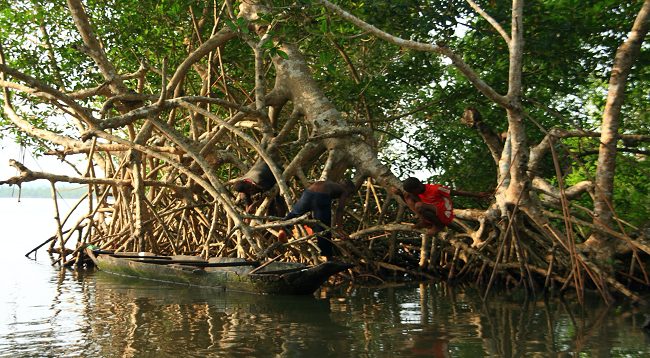The Federal Government has reiterated commitment to restoring mangrove in Ogoniland to improve lives in the communities.

This is contained in a statement by Mr Saghir el-Mohammed, Director Press, Ministry of Environment on Saturday, May 15, 2021 in Abuja.
According to the statement, Dr Mohammad Abubakar, Minister of Environment, said this in Abuja when he opened an international expertise meeting on mangrove restoration in the land.
He said that the gathering would improve the clean-up of Ogoniland devastated by years of oil spill.
According to Abubakar, the meeting is a turning point for mangrove ecosystems in Ogoniland.
“Using the knowledge and experience of the experts assembled here today, together, we will be able to restore the mangroves and improve the lives of the Ogoni communities who are affected every day by the devastating pollution.
“We are going to discuss the conditions and methods of successful replantation and recovery of mangrove habitats,” he said.
The minister said that the meeting would lead to the creation of a strategy and conservation plan for the restoration of mangroves in Ogoniland.
He said that international experts provided their experiences from around the world and application to Ogoniland, adding that examples of successful mangrove restoration already taking place in the country were provided.
“Mangroves are not just ecologically significant but are critical to the livelihood and food security of communities in Ogoniland.
“It is hoped that the meeting will bring new momentum to the restoration efforts for mangrove ecosystems in Ogoniland, paving way for healthy ecosystems and successful environmental remediation of areas affected by pollution.
“It is worthy of note that the United Nations Environmental Programme (UNEP) found extensive damage to mangroves in Ogoniland when undertaking its 2011 Environmental Assessment of Ogoniland.
“The report found that the impact of oil on mangrove vegetation in Ogoniland has been disastrous,” he said.
The minister noted that the impacts of the pollution varied from extreme stress to total destruction.
“In the most impacted areas, only the roots of the mangroves remain, with no stems or leaves.
“In many of these areas, the roots were completely coated in oil, sometimes with a one centimeter or more thick layer of bituminous substance,” he explained.
Abubakar said that the experts discovered that pollution had accumulated over for a very long period.
The meeting was attended by experts from more than 20 institutions while the programme was supported by UNEP.
By Patricia Amogu
